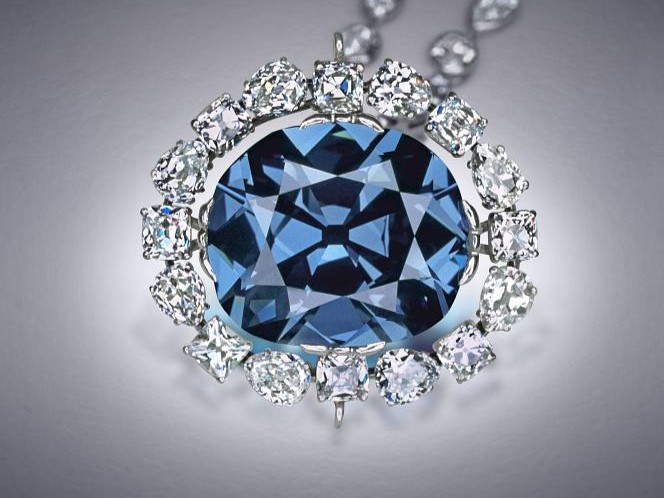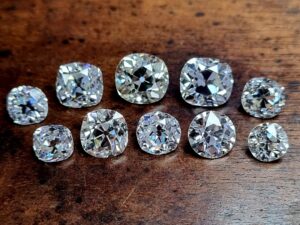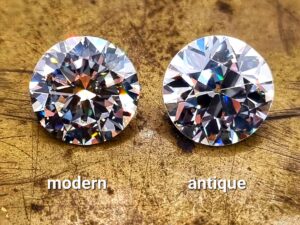The Hope Diamond, with its intriguing history and legendary curse, is one of the world’s most famous jewels. Originating from the Golconda mines in India, this gem has journeyed through the hands of European royalty and American tycoons, finally finding its home at the Smithsonian. This article explores the captivating story of the Hope Diamond, from its luxurious origins to its scientific significance.
Table of Contents
The History and Journey of the Hope Diamond: A Detailed Exploration
Origins in India’s Golconda Mines
The Hope Diamond’s saga begins in the legendary Golconda mines of India, renowned for their production of large, high-quality diamonds. Some of the most renowned diamonds came from these mines. The exact date of its discovery remains unknown, but it’s believed to have been in the 17th century. The diamond, in its rough form, was estimated to be over 112 carats, a size that underscored its rarity and value. Its dark blue color made this crystal even more uncommon.
Acquisition by Jean-Baptiste Tavernier
French gem merchant Jean-Baptiste Tavernier, known for his extensive travels in search of exotic gems, acquired the diamond during one of his trips to India. Tavernier is famous in the gem trade as he recorded his 6 travels to India and Persia in his books, today a prized collector’s item. He also drew and described in detail the gems he encountered. Tavernier’s keen eye for gems led him to this remarkable stone, which he also described in his travel logs, providing the first recorded history of the Hope Diamond.
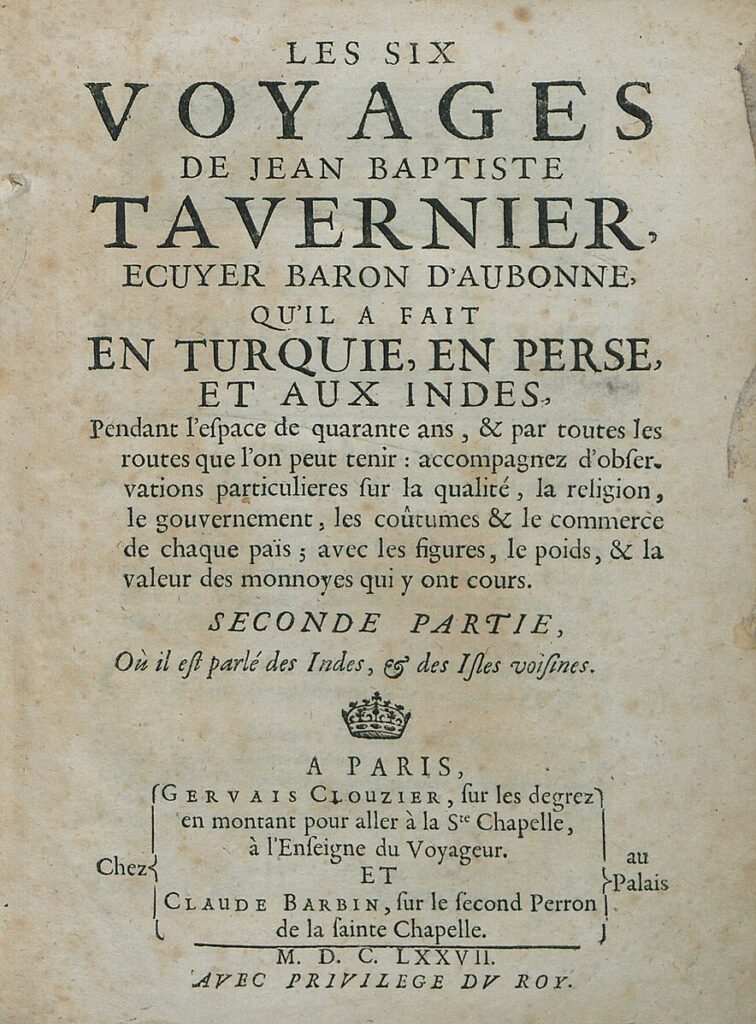
The French Blue in the Crown Jewels
Purchased by King Louis XIV of France, Tavernier’s patron, the diamond was cut to a stunning 67.125 carats and named the “Le Bleu de France” or “French Blue” in English. It became a symbol of French royalty, showcasing the grandeur of the Sun King’s court. The diamond was set in gold and suspended on a neck ribbon, which the king wore during ceremonial occasions.
The Mystery of the Missing Gem
The French Revolution brought chaos with most of the crown jewels being looted, and in 1792, the French Blue was also stolen from the royal treasury. Its disappearance sparked numerous rumors and theories, suggesting it was either lost forever or had changed hands in the underground market.
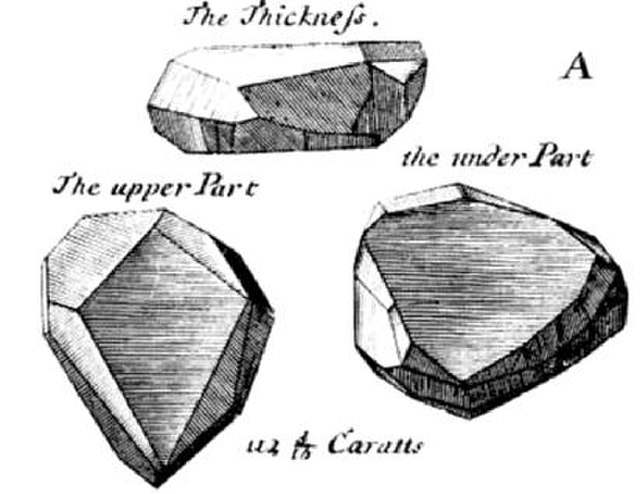
The Hope Diamond’s Re-Emergence
The diamond reappeared in the early 19th century in London, significantly recut to 45.52 carats Old Mine Cut, probably to disguise its identity. The cutting significantly reduced the diamond’s size but the new cut probably enhanced the diamond’s color. At the time, the Old Mine Cut was the favorite type of diamond cut. It was acquired by Henry Philip Hope, an English banker, giving it its current name. The Hope Diamond’s deep blue color and unique red phosphorescence, typical of Golconda diamonds, made it a subject of fascination and study.
If you wish to learn more about the History of diamond or more precisely about the Old Mine Cut you can read the following articles: The History of Diamond: An In-Depth Guide and The Old Mine Cut.
Cartier’s Role and the American Chapter
The famous jeweler Cartier played a crucial role in the Hope Diamond’s history. Cartier purchased the diamond in the early 20th century. At first they couldn’t sell it as the curse, while a compelling story, distracted potential buyers of the stone. Its astonishing price tag also highly reduced the number of potential acquirers. It was a significant drain on Cartier’s resources and they really needed to sell it. Eventually, Cartier sold it for a very small profit to Evalyn Walsh McLean, an American heiress and socialite, in 1911. Cartier’s modification of the setting to appeal to McLean’s tastes marked another transformation in the diamond’s appearance.
Harry Winston and the Smithsonian
Harry Winston acquired the Hope Diamond in 1949 as part of his purchase of Evalyn Walsh McLean’s entire jewelry collection, which was being liquidated to settle her debts after her death in 1947. Unlike previous owners who kept the diamond private, Winston was keen on sharing its beauty with the public. He included the Hope in his “Court of Jewels” exhibition, which toured the United States for educational and charitable purposes.
The diamond’s journey culminated with its donation to the Smithsonian Institution by Harry Winston in 1958. Since then, it has been a highlight of the National Museum of Natural History in Washington, D.C., attracting millions of visitors. Its display at the Smithsonian has allowed the public to appreciate its historical significance and unique beauty.

The Legend of the Curse
Origins of the Curse Myth
The legend of the Hope Diamond’s curse is believed to have begun in the early 20th century, long after the diamond had become renowned. The curse narrative likely originated as part of an effort to enhance the diamond’s mystique and allure, a common practice in the gem trade to intrigue potential buyers and the public. Indeed, even today, gemstones with a story and provenance obtain much higher prices that stones that don’t.
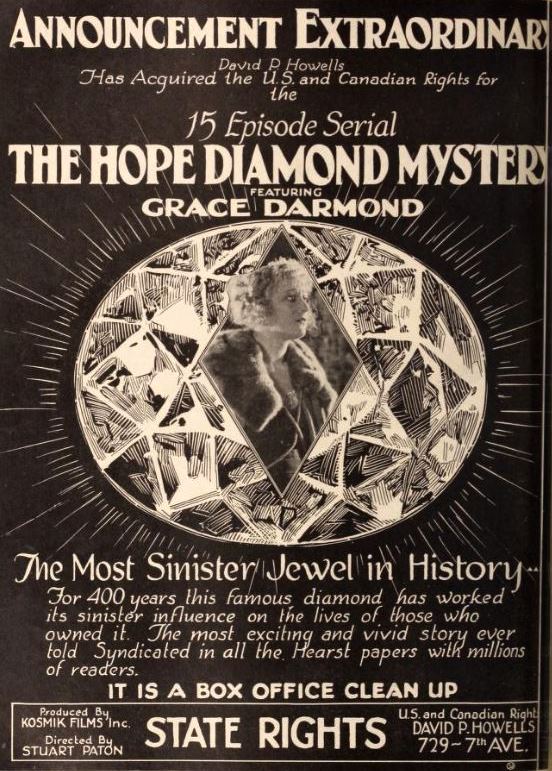
Tales of Misfortune
The curse is said to bring misfortune and tragedy to its owners and those who come into contact with it. Over the years, a series of unfortunate events and calamities have been linked to the diamond, fueling the legend. These include financial ruin, untimely deaths, and other personal tragedies experienced by various owners and their families.
The Tavernier Myth
One of the most enduring tales associated with the curse involves Jean-Baptiste Tavernier, the diamond’s first recorded European owner. Legend has it that after selling the diamond, Tavernier met a grisly end, being torn apart by wild dogs in Russia. However, historical records indicate that Tavernier lived a long life and died at the age of 84 in Moscow, totally refuting this particular story.
The Hope Family
The Hope family, from whom the diamond gets its name, also reportedly suffered from the curse. Several members of the family are said to have experienced financial difficulties and personal misfortunes, leading to the belief that the diamond brought bad luck.
The Evalyn Walsh McLean Story
One of the most famous owners of the Hope Diamond, Evalyn Walsh McLean, an American socialite, firmly believed in the curse. Despite her initial dismissal of the legend, her life was marked by a series of tragedies, including the death of her son, the insanity of her daughter, and the end of her marriage. McLean’s misfortunes significantly contributed to the lore of the curse.
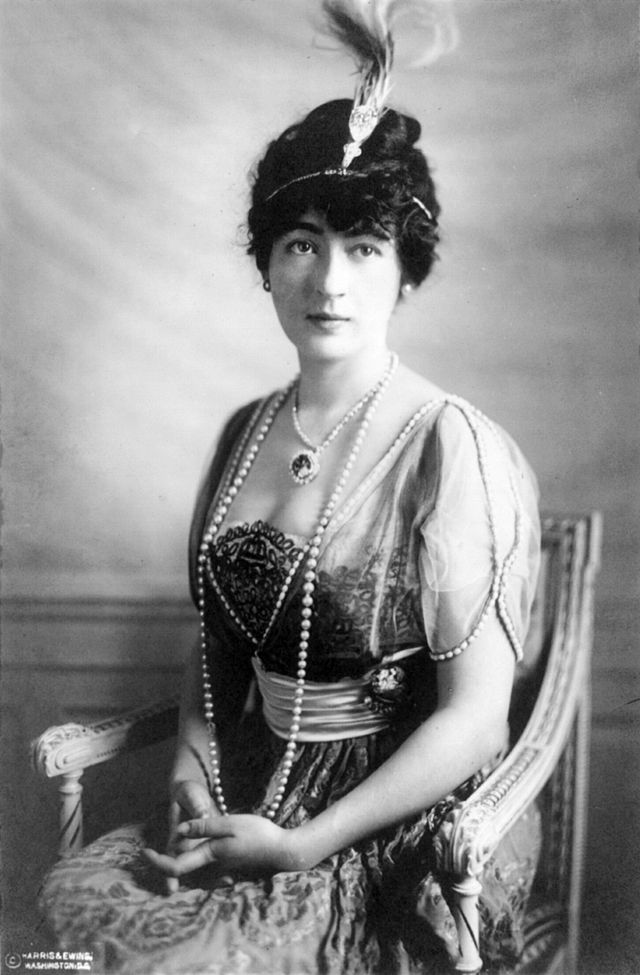
Skepticism and Rational Explanations
While the curse makes for a compelling story, many historians and gemologists view it with skepticism. They argue that the misfortunes attributed to the diamond are coincidental and not unusually high for people of that era and social status. Furthermore, the allure of a cursed gem adds to its mystique and value, providing a convenient narrative for sellers and owners.
The Smithsonian Years
The Hope Diamond’s arrival at the Smithsonian Institution marked a significant shift in its history, transitioning from a privately owned gem to a public spectacle. Donated by Harry Winston in 1958, it became a central attraction at the National Museum of Natural History in Washington, D.C. The diamond is displayed in a bulletproof glass case with meticulous lighting and security measures, drawing visitors worldwide.
At the Smithsonian, the Hope Diamond serves not only as a stunning exhibit but also as an educational tool, teaching visitors about gemology, history, and the science of gem formation. Its story, rich in history and mystery, continues to fascinate and educate. The diamond’s presence at the Smithsonian has transformed it from a symbol of luxury to a cultural and educational treasure, maintaining its allure and significance through the years.
Scientific and Gemological Aspects
The Hope Diamond is not only renowned for its storied past but also for its exceptional scientific and gemological characteristics. This section delves into these aspects, providing a deeper understanding of what makes the Hope Diamond truly unique.
Color and Composition: The Hope Diamond is classified as a Type IIb diamond, a rare category comprising less than 0.1% of all diamonds. Its striking blue color is due to the presence of boron atoms within its crystal structure. The intensity and hue of its blue coloration are exceptionally rare, making it a subject of great interest among gemologists.
Size and Cut: Originally, the Hope Diamond was a larger stone, estimated to be over 112 carats in its rough form. Over the centuries, it was cut and reshaped, currently weighing 45.52 carats. Its antique cushion cut, commonly named Old Mine Cut, is a shape that predates modern cutting techniques.
Luminescence: A remarkable feature of the Hope Diamond is its red phosphorescence. When exposed to ultraviolet light, the diamond emits a red glow, a phenomenon that lasts for a short time even after the light source is removed. This luminescence is a result of its unique chemical composition and structural anomalies. It is a rare but typical feature of diamonds originating from Golconda.
Research and Studies: The Hope Diamond has been the subject of numerous scientific studies. Researchers at institutions like the Smithsonian have conducted extensive examinations using modern gemological equipment. These studies aim to understand its formation, age, and the unique properties that contribute to its famed color and luminescence.
Comparison with Other Famous Diamonds: In the realm of famous diamonds, the Hope stands out for its size, color, and historical significance. While other famous diamonds like the Cullinan or the Koh-i-Noor are known for their size and historical connections, the Hope’s unique blue color and mysterious luminescence set it apart.
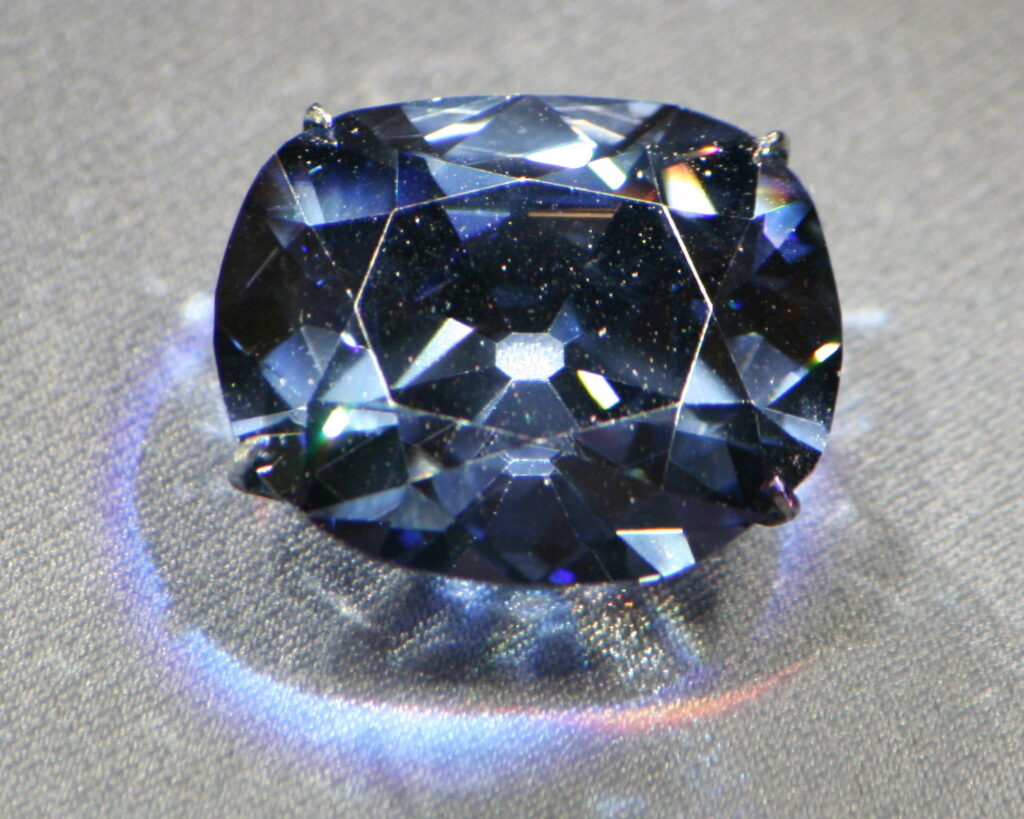
Conclusion
The Hope Diamond’s journey, from the Golconda mines to the Smithsonian, is as captivating as the gem itself. With its legendary curse and exceptional gemological properties, it embodies a rich tapestry of history, mystery, and beauty. This iconic gem continues to fascinate, symbolizing the timeless allure of the world’s most renowned diamonds.
Additional Resources
Books:
- “Hope Diamond: The Legendary History of a Cursed Gem” by Richard Kurin: A comprehensive exploration of the diamond’s history and the legends surrounding it.
Online Articles and Websites:
- Smithsonian National Museum of Natural History’s Hope Diamond Page: Smithsonian’s Hope Diamond: An authoritative source for scientific and historical information about the Hope Diamond.
Documentaries and Videos:
- “The Hope Diamond: Legend and Lore” (available on streaming platforms): A documentary that explores the myths and facts surrounding this famous gemstone.
- Smithsonian Channel’s mini-documentary on YouTube: Offers a visual and informative journey through the diamond’s history.
Museums and Exhibitions:
- Visiting the Smithsonian National Museum of Natural History in Washington, D.C., to view the Hope Diamond in person.
- Temporary exhibitions featuring the Hope Diamond or related themes in various museums worldwide.


